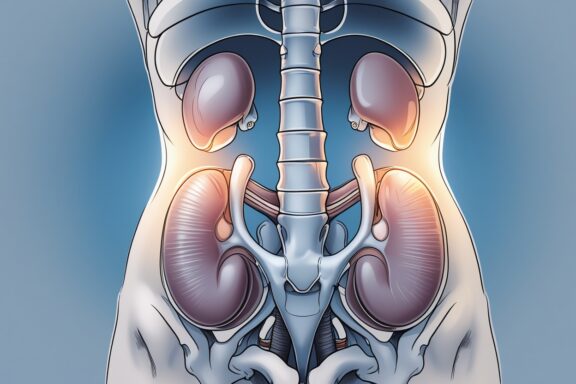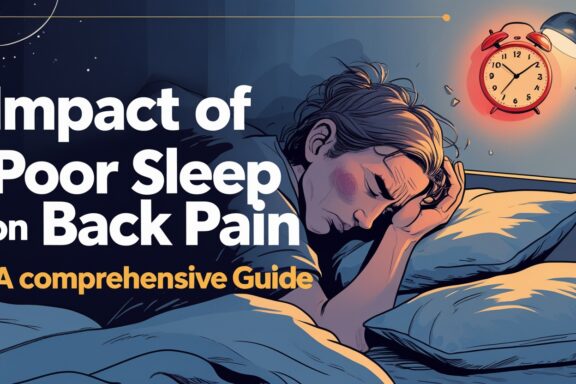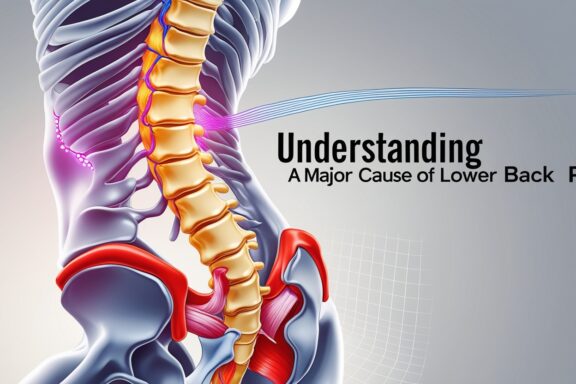Back pain—it's the uninvited guest that overstays its welcome, affecting millions worldwide. But here's the kicker: traditional approaches often fall short, leaving patients frustrated and searching for alternatives. Enter mind-body methods, a game-changing approach that's reshaping how we tackle this persistent problem.
The value of mind-body methods for treating back pain extends far beyond temporary relief. These integrative techniques address the complex interplay between physical discomfort and psychological factors, offering hope where conventional treatments have failed. From ancient practices like yoga and tai chi to modern approaches such as mindfulness-based stress reduction (MBSR), these methods are proving their worth in clinical settings worldwide.
Understanding the Mind-Body Connection in Back Pain
The Science Behind Pain Perception
Pain isn't just physical—it's a complex experience involving multiple systems. Research shows that chronic back pain actually rewires the brain, creating persistent pain signals even when tissue damage has healed. This neuroplasticity works both ways, though. The same brain changes that perpetuate pain can be reversed through targeted mind-body interventions.
Dr. John Sarno's groundbreaking work at NYU revealed that many cases of chronic back pain stem from tension myoneural syndrome (TMS), where psychological stress manifests as physical pain. His findings, though controversial initially, have gained substantial support from neuroimaging studies showing altered brain activity in chronic pain patients.
The Stress-Pain Cycle
Stress and back pain create a vicious cycle. When we're stressed, our muscles tense up—particularly in the neck, shoulders, and lower back. This tension leads to pain, which in turn creates more stress. Mind-body methods interrupt this cycle by activating the parasympathetic nervous system, promoting relaxation and healing.
Furthermore, chronic pain often triggers anxiety and depression, which amplify pain perception. It's like turning up the volume on an already loud stereo. Mind-body techniques help turn down that volume, providing relief that goes deeper than surface-level symptom management.
Evidence-Based Mind-Body Approaches
Yoga: Ancient Wisdom Meets Modern Medicine
Yoga tops the list of effective mind-body methods for back pain. A systematic review published in the Cochrane Database found that yoga provides moderate-quality evidence for pain relief and functional improvement in chronic low back pain. The beauty of yoga lies in its multifaceted approach—combining physical postures, breathing techniques, and meditation.
Specific yoga styles show particular promise. Iyengar yoga, with its emphasis on proper alignment and use of props, helps patients safely strengthen their core and improve flexibility. Gentle Hatha yoga sequences can reduce pain intensity by up to 64% according to studies conducted at Boston Medical Center.
Mindfulness Meditation and MBSR
Mindfulness-based stress reduction (MBSR) has emerged as a powerhouse for pain management. Developed by Jon Kabat-Zinn at the University of Massachusetts Medical Center, MBSR teaches patients to observe their pain without judgment, fundamentally changing their relationship with discomfort.
A landmark study in JAMA Internal Medicine showed that MBSR participants experienced a 58% reduction in pain intensity compared to usual care. The technique works by reducing activity in the brain's pain centers while increasing activation in areas associated with pain modulation and emotional regulation.
Tai Chi: The Moving Meditation
Often called “meditation in motion,” tai chi combines gentle movements with deep breathing and mental focus. This ancient Chinese practice has shown remarkable results for back pain sufferers. A randomized controlled trial published in the Archives of Internal Medicine found that participants practicing tai chi experienced significant improvements in pain, function, and sleep quality.
The slow, flowing movements of tai chi strengthen the core muscles that support the spine while improving balance and coordination. What's more, the meditative aspects help reduce stress hormones like cortisol, which contribute to inflammation and pain sensitivity.
Progressive Muscle Relaxation and Biofeedback
PMR: Tensing to Release
Progressive muscle relaxation (PMR) might seem counterintuitive—deliberately tensing muscles to achieve relaxation. However, this technique teaches body awareness and control that many back pain sufferers lack. By systematically tensing and releasing muscle groups, patients learn to identify and release chronic tension patterns.
Research indicates that PMR can reduce pain intensity by 25-30% when practiced regularly. The technique is particularly effective for tension-type back pain and can be easily learned through guided audio programs or mobile apps.
Biofeedback: Real-Time Body Awareness
Biofeedback uses electronic sensors to provide real-time information about physiological processes like muscle tension, heart rate, and skin temperature. For back pain patients, electromyographic (EMG) biofeedback helps identify and reduce excessive muscle tension in the back and surrounding areas.
Studies show that biofeedback training can lead to sustained improvements in pain and function. The technique empowers patients by giving them tangible proof of their ability to influence their body's responses—a powerful psychological boost for those feeling helpless against chronic pain.
Cognitive Behavioral Therapy and Pain Psychology
Rewiring Pain Thoughts
Cognitive behavioral therapy (CBT) addresses the thoughts and behaviors that perpetuate pain. Many back pain sufferers develop catastrophic thinking patterns—imagining worst-case scenarios or believing their pain will never improve. CBT helps reframe these thoughts, reducing pain-related distress and disability.
A meta-analysis of 23 studies found that CBT significantly reduces pain intensity and improves function in chronic back pain patients. The technique teaches coping strategies like activity pacing, problem-solving, and stress management that provide long-term benefits.
Acceptance and Commitment Therapy
Acceptance and Commitment Therapy (ACT) takes a different approach, teaching patients to accept their pain while pursuing meaningful activities. Rather than fighting pain, ACT helps individuals live fulfilling lives despite discomfort. This psychological flexibility often leads to reduced pain intensity and improved quality of life.
Research published in the Journal of Pain showed that ACT participants had greater improvements in pain acceptance and psychological well-being compared to traditional cognitive therapy approaches.
Integration with Conventional Treatment
The Best of Both Worlds
Mind-body methods shouldn't replace necessary medical treatments—they enhance them. Physical therapy combined with mindfulness training shows superior results to either approach alone. Similarly, patients recovering from back surgery benefit from incorporating mind-body techniques into their rehabilitation programs.
Healthcare providers increasingly recognize this integrative approach. Major medical centers now offer comprehensive pain programs that combine medical interventions with mind-body therapies. The Cleveland Clinic, Mayo Clinic, and Johns Hopkins all incorporate these methods into their back pain treatment protocols.
Addressing Barriers to Implementation
Despite proven benefits, barriers exist to implementing mind-body methods. Time constraints, insurance coverage issues, and skepticism from both patients and providers can hinder adoption. However, technology is helping overcome these obstacles through apps, online programs, and telehealth platforms that make these techniques more accessible.
Frequently Asked Questions
How long does it take to see results from mind-body methods for back pain? Results vary, but many patients notice improvements within 4-8 weeks of consistent practice. Some experience relief after just a few sessions, while others need longer to see significant changes.
Are mind-body methods safe for all types of back pain? Generally yes, but it's important to consult healthcare providers before starting any new treatment. Certain conditions may require modifications or medical clearance first.
Can mind-body methods replace medication for back pain? While some patients successfully reduce or eliminate medications using these techniques, this should always be done under medical supervision. Mind-body methods work best as part of a comprehensive treatment plan.
Do insurance plans cover mind-body treatments for back pain? Coverage varies widely. Many insurers now cover certain mind-body therapies like meditation-based programs and yoga therapy when prescribed by healthcare providers.
What's the most effective mind-body method for back pain? There's no one-size-fits-all answer. Yoga, mindfulness meditation, and tai chi all show strong evidence. The best approach depends on individual preferences, physical capabilities, and specific pain characteristics.
Final Thoughts
The value of mind-body methods for treating back pain represents a paradigm shift in healthcare—one that recognizes the inseparable connection between mental and physical well-being. These approaches offer hope to millions struggling with chronic back pain, providing tools for lasting relief that go beyond temporary fixes.
Success with mind-body methods requires patience, practice, and often guidance from qualified instructors. But for those willing to embrace this holistic approach, the rewards extend far beyond pain relief. Improved sleep, reduced anxiety, better coping skills, and enhanced quality of life are common benefits reported by practitioners.
As research continues to validate these ancient practices through modern scientific methods, mind-body approaches are becoming mainstream options rather than alternative treatments. The future of back pain management lies not in choosing between conventional and mind-body methods, but in thoughtfully integrating both for optimal healing.
Remember, every journey toward healing begins with a single step. Whether that step involves rolling out a yoga mat, sitting quietly in meditation, or learning to breathe deeply during stressful moments, mind-body methods offer a path toward reclaiming your life from chronic back pain. The science is clear, the methods are accessible, and the potential for transformation is real.







